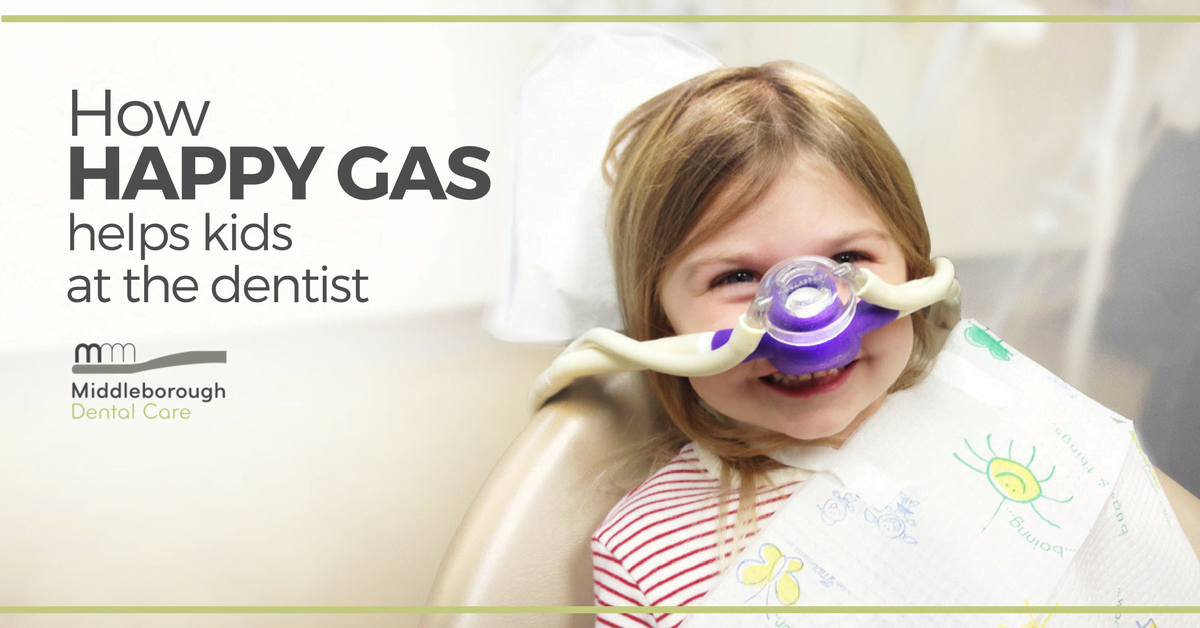
How nitrous oxide (happy gas) helps kids at the dentist
You might have heard it called “happy gas” or possibly “laughing gas”.
It’s an ideal combination of anaesthetic and sedative, particularly for children.
Its proper scientific name is nitrous oxide, and it’s a colourless gas with a faint, sweet smell.
What does nitrous oxide do?
Nitrous oxide was first used as an anaesthetic in surgical and dental procedures in the mid-1800s.
These days it’s combined with oxygen and used selectively as a safe and effective way to manage pain and anxiety in dentistry.
It works on the central nervous system to depress (minimise) sensations, relax the patient, and induce a state of euphoria (heightened pleasure), while having little effect on the respiratory system.
Another characteristic that makes it an ideal anaesthetic is that it works quickly – it has the fastest onset of any inhalation agent – and gets out of your system quickly as well.
What happens when you’re given nitrous oxide?
Sitting in the dentist’s chair, the child has a nosepiece placed over their nose for the gas to be inhaled as naturally as possible.
Gradually but within a few minutes, the child starts to feel relaxed, with a slight floating sensation. They also feel warm and cosy, possibly with some tingling in their hands and feet.
It’s like being half-asleep but still aware of the surroundings, almost as if what’s happening is a dream.
Because of the effects of nitrous oxide, a child might be temporarily forgetful and may not even remember the procedure.
How does the dentist work with nitrous oxide?
While administering nitrous oxide, staff will monitor each child’s level of sedation to ensure that they can still cooperate and hold their mouth open.
Dental treatment is done in the usual manner and with more ease given the lack of anxiety and tension from the patient. For complex procedures, this can result in more successful and beneficial dental treatments.
Local anaesthesia may also be used and can be given when the child is sedated.
Why is informed consent required?
A parent or carer must understand the reasons for sedation as well as the risks, and consent to both the sedation and the dental procedure.
Due to the effects within the body of replacing nitrogen with nitrous oxygen, some patients may feel a bit nauseous or could even vomit.
Although there is oxygen in the gas mixture, the patient’s breathing is always carefully monitored. Sometimes there is a need to switch off the flow of nitrous oxide and provide a “dose” of pure oxygen.
Before and after being given nitrous oxide
Your child can have a light meal such as jelly, soup, or toast and a drink two hours before the procedure, but should otherwise fast to minimise the possibility of nausea.
Most children recover from the effects of the nitrous oxide very quickly, although some do feel a little sick or nauseated.
Children must have a responsible adult at the appointment with them, who can take them home and supervise all playing and bathing for the next few hours after returning home.
When to call the dentist (or a doctor)
If the child vomits more than twice in the first hour after treatment, or if you have any questions during or after recovery, it’s best to get in touch.
Happy gas at Middleborough Dental Care
Our dentists are well trained and have a wealth of experience treating both children and adults using nitrous oxide gas.
We’re always here to make the entire experience of going to the dentist as stress-free as possible.
Happy gas is suitable for patients of all ages who do not have breathing difficulties. It is available at our clinic at an affordable price. Please give our friendly receptionist a call on (03) 9808 0207 to make an appointment!
alternative to sleep dentistry, anxious patient, happy gas, nitrous oxide, no fear